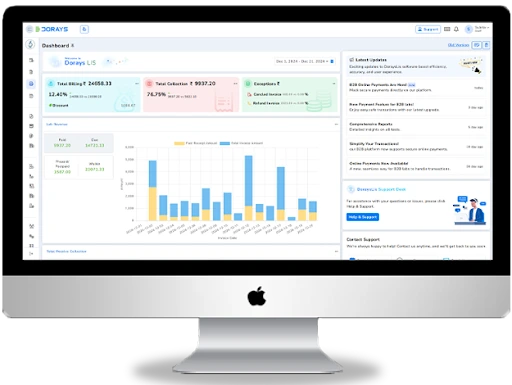
Complete Blood Count (CBC) Report Format
What is a CBC Test?
The CBC Test, more commonly known as a Complete Blood Count, is one of the most frequently performed tests in medicine today, as it analyzes your blood sample that holds information on a person’s health status. A blood sample is taken to measure various aspects of the blood such as the red blood cells (RBC) and the white blood cells (WBC) alongside the platelets and hemoglobin. The CBC Test is majorly used to screen for anemia, infection, and other blood related issues.
A CBC Test Simplifies Complex disorders managing numerous medical conditions which require CBC tests as part of the diagnostic procedure can be efficiently done when a simple blood test is done. Monitoring and treating infections and other related disorders becomes simple.
What is a Complete Blood Count (CBC) Report Format?
A CBC report is a document listing results from medical laboratory testing and includes parameters that aid in assessing the patient’s medical condition. The medical terminology includes the description of blood cells, their quantity and the physical features in detail. The usual groups which CBC values are categorized into are red blood cells (RBC), white blood cells (WBC), and Platelets which can also be subdivided further.
Tests Included in CBC Report
Test | Description |
Red Blood Cell Count (RBC) | Measures the number of red blood cells, responsible for carrying oxygen. |
White Blood Cell Count (WBC) | Measures the number of white blood cells, important for immune system function. |
Platelet Count | Measures the number of platelets, involved in blood clotting. |
Hemoglobin (Hb) | Measures the protein in RBCs that carries oxygen. |
Hematocrit (Hct) | Measures the percentage of RBCs in the blood. |
Mean Corpuscular Volume (MCV) | Measures the average size of red blood cells. |
Mean Corpuscular Hemoglobin (MCH) | Measures the amount of hemoglobin in RBCs. |
Mean Corpuscular Hemoglobin Concentration (MCHC) | Measures the concentration of hemoglobin in RBCs. |
Red Cell Distribution Width (RDW) | Measures the variation in the size of RBCs. |
Key Parts of a CBC Report
Part | Description |
WBC Count | Total number of white blood cells in a given volume of blood. |
RBC Count | Total number of red blood cells in a given volume of blood. |
Hemoglobin (Hb) | The protein in red blood cells that carries oxygen. |
Hematocrit (Hct) | The proportion of red blood cells in the blood. |
Platelet Count | The number of platelets in the blood, important for clotting. |
MCV, MCH, MCHC | Measures various aspects of red blood cells, like size and hemoglobin content. |
Normal Ranges for a CBC Report
Parameter | Normal Range |
WBC Count | 4,000 - 11,000 cells per microliter |
RBC Count | Men: 4.7-6.1 million cells per microliter, Women: 4.2-5.4 million cells per microliter |
Hemoglobin (Hb) | Men: 13.8 to 17.2 g/dL, Women: 12.1 to 15.1 g/dL |
Hematocrit (Hct) | Men: 40.7% to 50.3%, Women: 36.1% to 44.3% |
Platelet Count | 150,000 to 450,000 platelets per microliter |
MCV | 80 - 100 femtoliters |
MCH | 27 - 33 picograms per cell |
MCHC | 32 - 36 grams per deciliter |
Parameters to Consider in a CBC Report
Parameter | Interpretation |
WBC Count | High levels may indicate infection or inflammation, while low levels may suggest a weakened immune system. |
RBC Count | Low RBC count can point to anemia, while high levels could suggest dehydration or a disorder like polycythemia. |
Hemoglobin (Hb) | Low hemoglobin can indicate anemia or blood loss, while high values could indicate dehydration or lung disease. |
Hematocrit (Hct) | Similar to hemoglobin, low levels suggest anemia, while high levels may indicate dehydration. |
Platelet Count | Low platelets could lead to excessive bleeding, while high levels may suggest a risk of clotting disorders. |
Complete Blood Count Test Report Table Formatting Instructions
Confirm that all the basic components : WBC, RBC, Hemoglobin, Hematocrit and Platelet Count are included.
Report should clearly state any discrepancies from the normal ranges and mark high, low, or within the expected ranges.
Other information such as the patient’s age, sex, and relevant medical history may be added if necessary.
Include the physician's explanation of the CBC results, particularly relating to other potential or potential diagnoses, subsequent examinations, therapies, or alterations to ongoing treatment.
Tables should include referential ranges for more convenient gathering of values.
Add remarks for other relevant tests or reports concerning details not given in the report, such as abnormal morphology of the cells.
What Do the Results Imply?
Surely the results from CBC have great importance for diagnosis of multiple cases, for instance:
An increase in the number of white blood cells could point to an infection or inflammatory condition.
Decreased level of red blood cells may lead to anemia, which causes fatigue and weakness.
Imbalance in the number of platelets may be associated with bleeding or clotting disorders.
Always consult a physician concerning the rest of your CBC report.
Download CBC Report Sample
Download a CBC Report Sample Here
CBC Report Interpretation
Test | Interpretation |
WBC Count | A count higher than 11,000 may indicate infection, while lower values could signal a compromised immune system. |
RBC Count | Anemia is suggested by a low RBC count, while high RBC counts could indicate chronic hypoxia or dehydration. |
Hemoglobin (Hb) | Low levels of hemoglobin may indicate anemia, while high levels suggest polycythemia or dehydration. |
Platelet Count | A platelet count below 150,000 can increase bleeding risk, while a count higher than 450,000 could suggest a clotting disorder. |

Effortless Lab Management Starts Here!
Experience the future of lab operations. One click to revolutionize your lab.


